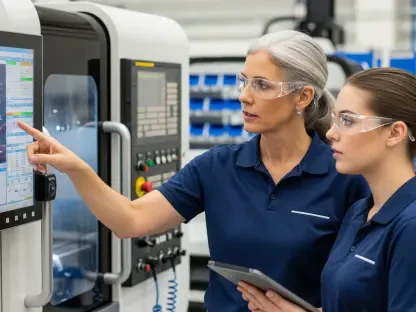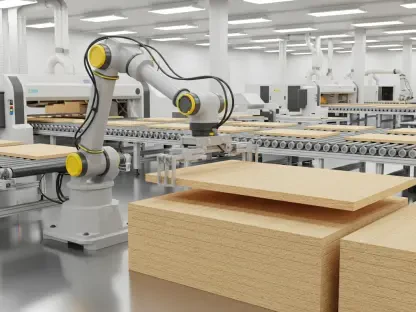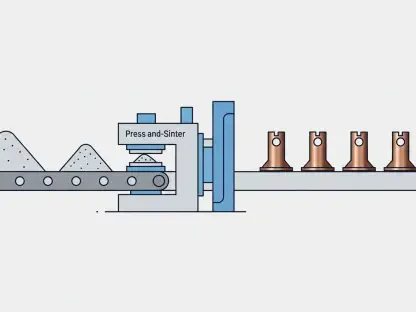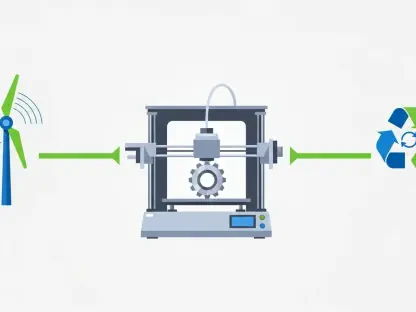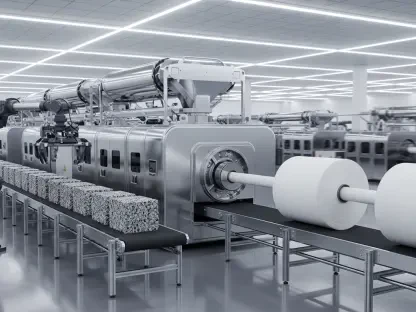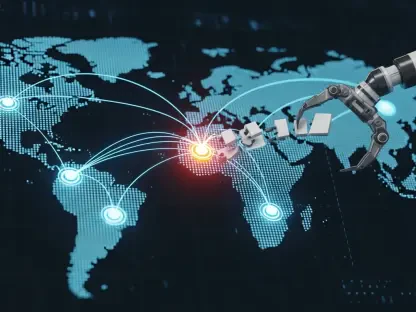In manufacturing, legacy IT systems often dominate operations, representing a significant portion of the infrastructure on factory floors. These systems, while reliable and long-serving, present substantial challenges today. Decades-old technology underpins many operations, yet these legacy systems become increasingly problematic as they struggle to integrate with modern technologies and operations. Their continued use poses real risks to business continuity, not only because they may become obsolete but also due to mounting cybersecurity and operational threats. This article dives into the key catalysts driving the shift from these timeworn IT investments to more current solutions. By examining pressing issues such as the cloud migration trend, cybersecurity imperatives, and the vital role of data in manufacturing, emphasis will be placed on the growing necessity for change. Today’s manufacturing leaders are increasingly compelled to reevaluate their digital infrastructure to remain competitive, secure, and operationally efficient in a rapidly evolving technological landscape.
Embracing the Challenge of Legacy Systems
Legacy IT systems in manufacturing often require complex, outdated software that is not intuitive for today’s workforce. Unlike the user-friendly touchscreens today’s employees expect, legacy systems are often cumbersome, demanding detailed memorization and extensive manual data entry. This creates a barrier not only in daily operations but also in attracting new talent who are accustomed to modern, technology-driven tools. Compounding the issue is the dwindling pool of IT professionals familiar with obsolete programming languages, crucial for maintaining and troubleshooting these systems. As these skilled professionals exit the workforce, businesses face a growing knowledge gap that exacerbates maintenance challenges. Moving past these legacy hurdles necessitates strategic change. Manufacturers must navigate transitioning from systems deeply embedded in their operations to more adaptable and user-friendly alternatives. Such transformation, though potentially daunting, offers a chance to align operations with contemporary technology standards, reducing maintenance complexity while enhancing workforce engagement and productivity.
The evolution toward cloud-based solutions marks another compelling reason for updating legacy systems. Cloud technology brings substantial benefits such as increased computing power, scalable storage, and enhanced operational automation, which were once dependent on large in-house IT teams. As manufacturers pivot towards cloud adoption, they can leverage these advantages to focus more precisely on core business functions. However, this transition is not without its challenges. Legacy systems, often anchored within the confines of an on-premises setup, can struggle to communicate seamlessly with cloud applications, leading to data sharing inefficiencies. Organizations thus face the double-edged sword of achieving technological advancement while managing the risks posed by these integration barriers. Successfully navigating this transition requires a strategic approach to replacing obsolete systems while ensuring new solutions are effectively integrated with existing processes and technologies.
Navigating the Cybersecurity Landscape
A significant driver in the push to modernize legacy systems in manufacturing is the mounting cybersecurity threats facing outdated infrastructure. Older systems were often built without robust cybersecurity measures, leaving them vulnerable to a range of threats, from criminal syndicates to sophisticated state-sponsored actors. The lack of fundamental security updates and the inability of these systems to integrate with modern security tools compounds these vulnerabilities, posing serious risks to business continuity and data integrity. In today’s interconnected world, manufacturers must prioritize cybersecurity to protect sensitive information and maintain trust with both suppliers and customers. Upgrading IT infrastructure is no longer a luxury but a necessary measure to safeguard against cyber threats that exploit weaknesses in outdated technology. By replacing legacy systems with modern, secure solutions, businesses can better protect their operations and maintain their reputation in the industry.
Addressing cybersecurity threats proactively involves conducting thorough assessments of existing systems to identify vulnerabilities. This process enables businesses to implement safeguards preemptively and develop a robust cybersecurity strategy tailored to their specific needs. Additionally, understanding the operational impact of a data breach or cyber attack underscores the urgency of systems modernization. Beyond mere compliance, adopting a security-first mindset involves integrating advanced threat detection tools and ensuring consistent software updates. These steps are crucial for keeping up with evolving threats in the digital landscape. By prioritizing cyber resilience as a core component of systems modernization, manufacturers not only protect their assets but also position themselves as trustworthy partners within their supply chains, enhancing overall operational security.
Harnessing Data for Operational Excellence
Data has become a cornerstone in driving manufacturing efficiency and product quality. Today’s competitive landscape demands manufacturers gather and analyze data from every corner of their operations to optimize performance, ensure consistent quality, and meet regulatory requirements. However, relying on legacy IT systems often results in fragmented and inaccessible data pools, impeding comprehensive analysis and informed decision-making. As operational demands evolve, the inability to fully leverage data hinders efforts to innovate and stay competitive. Modernizing legacy systems offers manufacturers the tools to efficiently capture and utilize data, transforming complex datasets into actionable insights. By effectively harnessing this data, organizations can optimize operations, improve product quality, and reduce downtime, creating an agile and competitive manufacturing environment.
Integrating modern data analytics capabilities into manufacturing processes empowers businesses to make informed, real-time decisions, enhancing production efficiency and product quality. Transitioning from outdated systems doesn’t merely involve replacing hardware and software; it requires a comprehensive overhaul of data management strategies. Manufacturers should emphasize data interoperability and consolidation, ensuring that all relevant information can be easily accessed and analyzed. This approach enables seamless integration of AI and machine learning technologies, facilitating predictive maintenance, enhanced quality control, and streamlined supply chain management. By embracing cutting-edge data analytics solutions, manufacturers can unlock new levels of operational excellence, driving increased profitability and competitiveness in the marketplace.
Ensuring Business Continuity and Financial Health
In today’s interconnected industrial landscape, the performance of IT systems directly influences business continuity and financial health. Disruptions due to system failures or security breaches can have immediate repercussions, impacting everything from production schedules to cash flow. Legacy IT systems, already challenged by compatibility and security issues, pose a considerable risk to uninterrupted operations. Manufacturers cannot afford downtime that affects delivery schedules, inventory management, or financial transactions, as these disruptions can quickly escalate into significant operational and financial challenges. The direct link between IT infrastructure performance and business continuity underscores the pressing need for manufacturers to prioritize systems modernization. By investing in updated, robust IT solutions, businesses can mitigate risks associated with legacy systems, ensuring smoother operations and sustainable financial stability.
Beyond immediate operational concerns, modernizing legacy systems has long-term strategic benefits that enhance overall business agility. Forward-looking companies recognize the importance of a resilient IT foundation capable of supporting growth and adaptation in dynamic environments. Embracing new technologies enhances competitive advantages and prepares organizations for future challenges, enabling them to respond swiftly to market changes. Updating IT infrastructure is not simply an expenditure but a strategic investment in the company’s future success. By ensuring robust and reliable IT capabilities, manufacturers can foster innovation, streamline processes, and enhance their financial performance, reinforcing their position in the increasingly competitive manufacturing sector.
The Road Ahead: Strategic Modernization Approaches
In the manufacturing sector, legacy IT systems have long been the backbone of operations, making up a large portion of the technology found on factory floors. While they’ve proven reliable over many years, these systems now face significant challenges. Built on decades-old technology, they increasingly struggle to integrate with new, modern solutions. This inability to adapt poses serious risks to business continuity, as they not only face the possibility of becoming obsolete but are also vulnerable to rising cybersecurity threats and operational inefficiencies. This article explores the key factors pushing manufacturers to transition from these outdated IT systems to more contemporary solutions. By focusing on issues like the trend toward cloud migration, the critical need for cybersecurity, and the important role data plays in manufacturing, the necessity for change becomes increasingly apparent. Today, manufacturing leaders are urged to reassess their digital infrastructure to stay competitive and secure while maintaining operational efficiency in an ever-evolving technological world.


